“Cloud Security is the whole bundle of technology, protocols, and best practices that protect Cloud Computing environments, applications running in the Cloud, and data held in the Cloud.”
Cloud Security is a discipline of Cybersecurity dedicated to securing Cloud Computing systems. This includes keeping data private and safe across online-based infrastructure, applications, and platforms. Securing these systems involves the efforts of cloud providers and the clients that use them, whether an individual, small to medium business, or enterprise uses.
Cloud providers host services on their servers through always-on internet connections. Since their business relies on customer trust, cloud security methods are used to keep client data private and safely stored. However, cloud security also partially rests in the client’s hands as well. Understanding both facets is pivotal to a healthy cloud security solution.
At its core, Cloud Security is composed of the following categories:
- Data security
- Identity and access management (IAM)
- Governance (policies on threat prevention, detection, and mitigation)
- Data retention (DR) and business continuity (BC) planning
- Legal compliance
Cloud security may appear like legacy IT security, but this framework actually demands a different approach. Before diving deeper, let’s first look at what Cloud Security is.
What Is Cloud Security
Cloud Security is the whole bundle of technology, protocols, and best practices that protect Cloud Computing environments, applications running in the Cloud, and data held in the Cloud. Securing cloud services begins with understanding what exactly is being secured, as well as, the system aspects that must be managed.
As an overview, backend development against security vulnerabilities is largely within the hands of cloud service providers. Aside from choosing a security-conscious provider, clients must focus mostly on proper service configuration and safe use habits. Additionally, clients should be sure that any end-user hardware and networks are properly secured.
The full scope of cloud security is designed to protect the following, regardless of your responsibilities:
- Physical networks — routers, electrical power, cabling, climate controls, etc.
- Data storage — hard drives, etc.
- Data servers — core network computing hardware and software
- Computer virtualization frameworks — virtual machine software, host machines, and guest machines
- Operating systems (OS) — software that houses
- Middleware — application programming interface (API) management,
- Runtime environments — execution and upkeep of a running program
- Data — all the information stored, modified, and accessed
- Applications — traditional software services (email, tax software, productivity suites, etc.)
- End-user hardware — computers, mobile devices, Internet of Things (IoT) Devices, etc.
With Cloud Computing, ownership over these components can vary widely. This can make the scope of client security responsibilities unclear. Since securing the cloud can look different based on who has authority over each component, it’s important to understand how these are commonly grouped.
To simplify, Cloud Computing Components are secured from two main viewpoints:
1. Cloud service types are offered by third-party providers as modules used to create the cloud environment. Depending on the type of service, you may manage a different degree of the components within the service:
- The core of any third-party cloud service involves the provider managing the physical network, data storage, data servers, and computer virtualization frameworks. The service is stored on the provider’s servers and virtualized via their internally managed network to be delivered to clients to be accessed remotely. This offloads hardware and other infrastructure costs to give clients access to their computing needs from anywhere via internet connectivity.
- Software-as-a-Service (SaaS) cloud services provide clients access to applications that are purely hosted and run on the provider’s servers. Providers manage the applications, data, runtime, middleware, and operating system. Clients are only tasked with getting their applications. SaaS examples include Google Drive, Slack, Salesforce, Microsoft 365, Cisco WebEx, Evernote.
- Platform-as-a-Service cloud services provide clients a host for developing their own applications, which are run within a client’s own “sandboxed” space on provider servers. Providers manage the runtime, middleware, operating system. Clients are tasked with managing their applications, data, user access, end-user devices, and end-user networks. PaaS examples include Google App Engine, Windows Azure.
- Infrastructure-as-a-Service (IaaS) cloud services offer clients the hardware and remote connectivity frameworks to house the bulk of their computing, down to the operating system. Providers only manage core cloud services. Clients are tasked with securing all that gets stacked atop an operating system, including applications, data, runtimes, middleware, and the OS itself. In addition, clients need to manage user access, end-user devices, and end-user networks. IaaS examples include Microsoft Azure, Google Compute Engine (GCE), Amazon Web Services (AWS).
2. Cloud environments are deployment models in which one or more cloud services create a system for the end-users and organizations. These segments the management responsibilities — including security — between clients and providers.
The currently used Cloud environments are:
- Public cloud environments are composed of multi-tenant cloud services where a client shares a provider’s servers with other clients, like an office building or coworking space. These are third-party services run by the provider to give clients access via the web.
- Private third-party cloud environments are based on the use of a cloud service that provides the client with exclusive use of their own cloud. These single-tenant environments are normally owned, managed, and operated offsite by an external provider.
- Private in-house cloud environments also composed of single-tenant cloud service servers but operated from their own private data center. In this case, this cloud environment is run by the business themselves to allow full configuration and setup of every element.
- Multi-cloud environments include the use of two or more cloud services from separate providers. These can be any blend of public and/or private cloud services.
- Hybrid cloud environments consist of using a blend of private third-party cloud and/or onsite private cloud data center with one or more public clouds.
By framing it from this perspective, we can understand that cloud-based security can be a bit different based on the type of cloud space users are working in. But the effects are felt by both individual and organizational clients alike.
How Does Cloud Security Work
Every cloud security measure works to accomplish one or more of the following:
- Enable data recovery in case of data loss
- Protect storage and networks against malicious data theft
- Deter human error or negligence that causes data leaks
- Reduce the impact of any data or system compromise
Data security is an aspect of cloud security that involves the technical end of threat prevention. Tools and technologies allow providers and clients to insert barriers between the access and visibility of sensitive data. Among these, encryption is one of the most powerful tools available. Encryption scrambles your data so that it’s only readable by someone who has the encryption key. If your data is lost or stolen, it will be effectively unreadable and meaningless. Data transit protections like virtual private networks (VPNs) are also emphasized in cloud networks.
Identity and access management (IAM) pertains to the accessibility privileges offered to user accounts. Managing authentication and authorization of user accounts also apply here. Access controls are pivotal to restrict users — both legitimate and malicious — from entering and compromising sensitive data and systems. Password management, multi-factor authentication, and other methods fall in the scope of IAM.
Governance focuses on policies for threat prevention, detection, and mitigation. With SMB and enterprises, aspects like threat intel can help with tracking and prioritizing threats to keep essential systems guarded carefully. However, even individual cloud clients could benefit from valuing safe user behavior policies and training. These apply mostly in organizational environments, but rules for safe use and response to threats can be helpful to any user.
Data retention (DR) and business continuity (BC) planning involve technical disaster recovery measures in case of data loss. Central to any DR and BC plan are methods for data redundancy such as backups. Additionally, having technical systems for ensuring uninterrupted operations can help. Frameworks for testing the validity of backups and detailed employee recovery instructions are just as valuable for a thorough BC plan.
Legal compliance revolves around protecting user privacy as set by legislative bodies. Governments have taken up the importance of protecting private user information from being exploited for profit. As such, organizations must follow regulations to abide by these policies. One approach is the use of data masking, which obscures identity within data via encryption methods.
Cloud Security Risks
What are the security issues in Cloud Computing? Because if you don’t know them, then how are you supposed to put proper measures in place? After all, weak cloud security can expose users and providers to all types of cyber security threats. Some common cloud security threats include:
- Risks of cloud-based infrastructure including incompatible legacy IT frameworks, and third-party data storage service disruptions.
- Internal threats due to human error such as misconfiguration of user access controls.
- External threats caused almost exclusively by malicious actors, such as malware, phishing, and Ddos attacks.
The biggest risk with the cloud is that there is no perimeter. Traditional Cybersecurity focused on protecting the perimeter, but Cloud environments are highly connected which means insecure APIs (Application Programming Interfaces) and account hijacks can pose real problems. Faced with Cloud Computing security risks, cyber security professionals need to shift to a data-centric approach.
Interconnectedness also poses problems for networks. Malicious actors often breach networks through compromised or weak credentials. Once a hacker manages to make a landing, they can easily expand and use poorly protected interfaces in the cloud to locate data on different databases or nodes. They can even use their own cloud servers as a destination where they can export and store any stolen data. Security needs to be in the cloud — not just protecting access to your cloud data.
Third-party storage of your data and access via the internet each pose their own threats as well. If for some reason those services are interrupted, your access to the data may be lost. For instance, a phone network outage could mean you can’t access the cloud at an essential time. Alternatively, a power outage could affect the data center where your data is stored, possibly with permanent data loss.
Such interruptions could have long-term repercussions. A recent power outage at an Amazon cloud data facility resulted in data loss for some customers when servers incurred hardware damage. This is a good example of why you should have local backups of at least some of your data and applications.
Why Cloud Security Is Important
In the 1990s, business and personal data lived locally — and security was local as well. Data would be located on a PC’s internal storage at home, and on enterprise servers, if you worked for a company.
Introducing cloud technology has forced everyone to reevaluate cyber security. Your data and applications might be floating between local and remote systems — and always internet-accessible. If you are accessing Google Docs on your smartphone, or using Salesforce software to look after your customers, that data could be held anywhere. Therefore, protecting it becomes more difficult than when it was just a question of stopping unwanted users from gaining access to your network. Cloud security requires adjusting some previous IT practices, but it has become more essential for two key reasons:
- Convenience over security. Cloud computing is exponentially growing as a primary method for both workplace and individual use. Innovation has allowed new technology to be implemented quicker than industry security standards can keep up, putting more responsibility on users and providers to consider the risks of accessibility.
- Centralization and multi-tenant storage. Every component — from core infrastructure to small data like emails and documents — can now be located and accessed remotely on 24/7 web-based connections. All this data gathering in the servers of a few major service providers can be highly dangerous. Threat actors can now target large multi-organizational data centers and cause immense data breaches.
Unfortunately, malicious actors realize the value of cloud-based targets and increasingly probe them for exploits. Despite cloud providers taking many security roles from clients, they do not manage everything. This leaves even non-technical users with the duty to self-educate on cloud security.
Final Thoughts
That said, users are not alone in cloud security responsibilities. Being aware of the scope of your security duties will help the entire system stay much safer.
🅐🅚🅖
Interested in Management, Design or Technology Consulting, contact anil.kg.26@gmail.com
Get updates and news on our social channels!
LATEST POSTS
- A Tale Of Two Frameworks: Spring Boot vs. Django
 “Spring Boot’s convention over configuration approach simplifies development, allowing developers to focus on building robust applications rather than wrestling with… Read more: A Tale Of Two Frameworks: Spring Boot vs. Django
“Spring Boot’s convention over configuration approach simplifies development, allowing developers to focus on building robust applications rather than wrestling with… Read more: A Tale Of Two Frameworks: Spring Boot vs. Django - Unleashing The Power Of Django
 “Django, akin to a Swiss Army knife, provides a comprehensive toolkit, facilitating developers in tackling diverse web development challenges with… Read more: Unleashing The Power Of Django
“Django, akin to a Swiss Army knife, provides a comprehensive toolkit, facilitating developers in tackling diverse web development challenges with… Read more: Unleashing The Power Of Django - Potential of Progressive Web Apps (PWAs)
 “PWAs are not just about technology; they are about creating meaningful connections with users.” Why PWAs Are the Next Frontier… Read more: Potential of Progressive Web Apps (PWAs)
“PWAs are not just about technology; they are about creating meaningful connections with users.” Why PWAs Are the Next Frontier… Read more: Potential of Progressive Web Apps (PWAs) - Unleashing The Power Of Spring Framework
 “Spring Framework simplifies enterprise Java development, but it does so in a way that embraces existing frameworks and infrastructure.” –… Read more: Unleashing The Power Of Spring Framework
“Spring Framework simplifies enterprise Java development, but it does so in a way that embraces existing frameworks and infrastructure.” –… Read more: Unleashing The Power Of Spring Framework - Key Trends Of OSINT In 2024
 “The future of OSINT lies in our ability to adapt and innovate. By embracing emerging technologies and ethical best practices,… Read more: Key Trends Of OSINT In 2024
“The future of OSINT lies in our ability to adapt and innovate. By embracing emerging technologies and ethical best practices,… Read more: Key Trends Of OSINT In 2024 - Can Google’s Carbon Language Replace C++?
 “While Carbon may excel in performance-critical domains, it cannot replace the versatility and extensive ecosystem of C++.” As the world… Read more: Can Google’s Carbon Language Replace C++?
“While Carbon may excel in performance-critical domains, it cannot replace the versatility and extensive ecosystem of C++.” As the world… Read more: Can Google’s Carbon Language Replace C++? - Integration of Design Thinking, Lean, and Agile
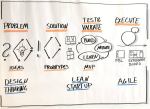 “Innovation thrives when Design Thinking, Lean, and Agile converge, creating a powerful force that propels organizations towards excellence.” In today’s… Read more: Integration of Design Thinking, Lean, and Agile
“Innovation thrives when Design Thinking, Lean, and Agile converge, creating a powerful force that propels organizations towards excellence.” In today’s… Read more: Integration of Design Thinking, Lean, and Agile - Benefits Of Infrastructure as Code (IaC)
 “Infrastructure as Code is the single most important thing you can do to improve the agility, reliability, and security of… Read more: Benefits Of Infrastructure as Code (IaC)
“Infrastructure as Code is the single most important thing you can do to improve the agility, reliability, and security of… Read more: Benefits Of Infrastructure as Code (IaC) - Power Of Internet of Everything (IoE)
 “The true power of the Intebrnet of Everything lies not in the things themselves, but in the connections and insights… Read more: Power Of Internet of Everything (IoE)
“The true power of the Intebrnet of Everything lies not in the things themselves, but in the connections and insights… Read more: Power Of Internet of Everything (IoE) - How Is The Enterprise IoT Evolving?
 “IoT is not just about connecting things; it’s about connecting minds, creating experiences, and transforming industries.” Pavan Singh, IoT Mentor… Read more: How Is The Enterprise IoT Evolving?
“IoT is not just about connecting things; it’s about connecting minds, creating experiences, and transforming industries.” Pavan Singh, IoT Mentor… Read more: How Is The Enterprise IoT Evolving? - IT Pricing Strategy And Models
 “The art of pricing lies in finding the perfect balance between capturing value and satisfying customers.” In the ever-evolving landscape… Read more: IT Pricing Strategy And Models
“The art of pricing lies in finding the perfect balance between capturing value and satisfying customers.” In the ever-evolving landscape… Read more: IT Pricing Strategy And Models - What Is SYCL (“sickle”)?
 “SYCL provides a powerful and intuitive programming model that simplifies heterogeneous computing, allowing developers to write portable code that can… Read more: What Is SYCL (“sickle”)?
“SYCL provides a powerful and intuitive programming model that simplifies heterogeneous computing, allowing developers to write portable code that can… Read more: What Is SYCL (“sickle”)? - What Is A Data Lakehouse?
 “With a data lakehouse, organizations can break down data silos, democratize data access, and accelerate innovation by enabling data exploration… Read more: What Is A Data Lakehouse?
“With a data lakehouse, organizations can break down data silos, democratize data access, and accelerate innovation by enabling data exploration… Read more: What Is A Data Lakehouse? - 5G – The Future Of The Internet
 “5G is the next big step in the evolution of wireless technology. It will offer significantly faster speeds and lower… Read more: 5G – The Future Of The Internet
“5G is the next big step in the evolution of wireless technology. It will offer significantly faster speeds and lower… Read more: 5G – The Future Of The Internet - Ransomware Groups Are Switching To Rust
 “Rust is to Ransomware what a lockpick is to a thief – a powerful tool that can be used for… Read more: Ransomware Groups Are Switching To Rust
“Rust is to Ransomware what a lockpick is to a thief – a powerful tool that can be used for… Read more: Ransomware Groups Are Switching To Rust - Streaming Data Pipelines
 “A streaming data pipeline is like a river: it flows continuously, changes constantly, and requires monitoring to ensure it stays… Read more: Streaming Data Pipelines
“A streaming data pipeline is like a river: it flows continuously, changes constantly, and requires monitoring to ensure it stays… Read more: Streaming Data Pipelines - Why Rust Is Best?
 “Rust is a systems programming language that runs blazingly fast, prevents segfaults, and guarantees thread safety.” Rust is a modern… Read more: Why Rust Is Best?
“Rust is a systems programming language that runs blazingly fast, prevents segfaults, and guarantees thread safety.” Rust is a modern… Read more: Why Rust Is Best? - Database Sharding Explained
 “Database sharding is like breaking a large puzzle into smaller, more manageable pieces, enabling improved scalability, performance, and availability, but… Read more: Database Sharding Explained
“Database sharding is like breaking a large puzzle into smaller, more manageable pieces, enabling improved scalability, performance, and availability, but… Read more: Database Sharding Explained - Ambient Computing Will Be The Future Tech
 “Ambient computing creates a seamless technology-rich environment, but challenges in privacy, security, ethics, interoperability, user acceptance, and technical complexity must… Read more: Ambient Computing Will Be The Future Tech
“Ambient computing creates a seamless technology-rich environment, but challenges in privacy, security, ethics, interoperability, user acceptance, and technical complexity must… Read more: Ambient Computing Will Be The Future Tech - Key Trends Of OSINT In 2023
 “OSINT is not just a technique, it’s a mindset. It’s about looking at the world with an open mind and… Read more: Key Trends Of OSINT In 2023
“OSINT is not just a technique, it’s a mindset. It’s about looking at the world with an open mind and… Read more: Key Trends Of OSINT In 2023 - Why Is OSINT Important?
 “OSINT is not just a technique, it’s a mindset. It’s about looking at the world with an open mind and… Read more: Why Is OSINT Important?
“OSINT is not just a technique, it’s a mindset. It’s about looking at the world with an open mind and… Read more: Why Is OSINT Important? - DataOps Explained
 “DataOps is the practice of integrating data engineering and data analytics to enable agile development, testing, and deployment of data-driven… Read more: DataOps Explained
“DataOps is the practice of integrating data engineering and data analytics to enable agile development, testing, and deployment of data-driven… Read more: DataOps Explained - Transformation Platform as a Service (tPaaS)
 “tPaaS is all about enabling Digital Transformation by providing a platform that supports fast, agile and secure development and deployment… Read more: Transformation Platform as a Service (tPaaS)
“tPaaS is all about enabling Digital Transformation by providing a platform that supports fast, agile and secure development and deployment… Read more: Transformation Platform as a Service (tPaaS) - Hello Julia – Programming Language For Scientific Computing
 “Julia is a high-level, high-performance dynamic programming language designed for numerical computing, data science, and scientific computing.” The Julia Language… Read more: Hello Julia – Programming Language For Scientific Computing
“Julia is a high-level, high-performance dynamic programming language designed for numerical computing, data science, and scientific computing.” The Julia Language… Read more: Hello Julia – Programming Language For Scientific Computing - Top Programming Languages For Fintech
 “The top programming languages for Fintech are those that provide robust and secure frameworks for handling sensitive financial data, as… Read more: Top Programming Languages For Fintech
“The top programming languages for Fintech are those that provide robust and secure frameworks for handling sensitive financial data, as… Read more: Top Programming Languages For Fintech - How To Choose A NoSQL Database
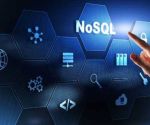 “SQL databases are like Excel spreadsheets. They’re good for storing structured data that you need to query in a specific… Read more: How To Choose A NoSQL Database
“SQL databases are like Excel spreadsheets. They’re good for storing structured data that you need to query in a specific… Read more: How To Choose A NoSQL Database - Zero Knowledge Proof Explained
 “Zero Knowledge Proof is a powerful cryptographic tool that enables secure and private communication without revealing sensitive information, making it… Read more: Zero Knowledge Proof Explained
“Zero Knowledge Proof is a powerful cryptographic tool that enables secure and private communication without revealing sensitive information, making it… Read more: Zero Knowledge Proof Explained - Embracing Decentralized CyberSecurity
 “Decentralized CyberSecurity moves responsibilities and controls away from the center, to the individual areas most vulnerable to attack today.” Security… Read more: Embracing Decentralized CyberSecurity
“Decentralized CyberSecurity moves responsibilities and controls away from the center, to the individual areas most vulnerable to attack today.” Security… Read more: Embracing Decentralized CyberSecurity - Global Impact of Ransomware Attacks
 “The global impact of ransomware attacks is a sobering reminder that cybersecurity is not just about protecting our data and… Read more: Global Impact of Ransomware Attacks
“The global impact of ransomware attacks is a sobering reminder that cybersecurity is not just about protecting our data and… Read more: Global Impact of Ransomware Attacks - Process Orchestrator Explained
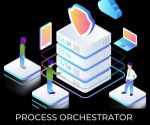 “Process orchestrator is the ultimate tool for achieving operational excellence, enabling you to optimize processes, improve productivity, and reduce costs.”… Read more: Process Orchestrator Explained
“Process orchestrator is the ultimate tool for achieving operational excellence, enabling you to optimize processes, improve productivity, and reduce costs.”… Read more: Process Orchestrator Explained - What Does Platform Engineering Do?
 “The success of a Digital Platform depends on the strength of its underlying engineering. Solid engineering principles ensure reliability, scalability,… Read more: What Does Platform Engineering Do?
“The success of a Digital Platform depends on the strength of its underlying engineering. Solid engineering principles ensure reliability, scalability,… Read more: What Does Platform Engineering Do? - Are Full-Stack Developers Obsolete?
 “According to the Stack Overflow 2016 Developer Survey, Full-Stack Developers are one of the highest-paid and most sought-after professionals today.”… Read more: Are Full-Stack Developers Obsolete?
“According to the Stack Overflow 2016 Developer Survey, Full-Stack Developers are one of the highest-paid and most sought-after professionals today.”… Read more: Are Full-Stack Developers Obsolete? - Top 5 Issues For Overusing Microservices
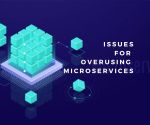 “Microservices should only be seriously considered after evaluating the alternative paths.” The overuse of new architectural styles is common within… Read more: Top 5 Issues For Overusing Microservices
“Microservices should only be seriously considered after evaluating the alternative paths.” The overuse of new architectural styles is common within… Read more: Top 5 Issues For Overusing Microservices - Customer Experience (CX) Trends In 2023
 “Customer Experience is the next competitive battleground. It’s where business is going to be won or lost.” Tom Knighton, Executive… Read more: Customer Experience (CX) Trends In 2023
“Customer Experience is the next competitive battleground. It’s where business is going to be won or lost.” Tom Knighton, Executive… Read more: Customer Experience (CX) Trends In 2023 - Cognitive Computing In 2023 And Beyond
 “IBM defines Cognitive Computing as systems that learn at scale, reason with purpose and interact with humans naturally.” 2022 was… Read more: Cognitive Computing In 2023 And Beyond
“IBM defines Cognitive Computing as systems that learn at scale, reason with purpose and interact with humans naturally.” 2022 was… Read more: Cognitive Computing In 2023 And Beyond - Top 7 Digital Transformation Trends In 2023
 “The threat of a recession coupled with the ongoing need for transformation and growth means CIOs must make force multiplying… Read more: Top 7 Digital Transformation Trends In 2023
“The threat of a recession coupled with the ongoing need for transformation and growth means CIOs must make force multiplying… Read more: Top 7 Digital Transformation Trends In 2023 - Top 5 DevOps Trends in 2023
 “The Global DevOps market size is expected to expand at a CAGR of 24.59% by 2027, reaching over 22199.4 million… Read more: Top 5 DevOps Trends in 2023
“The Global DevOps market size is expected to expand at a CAGR of 24.59% by 2027, reaching over 22199.4 million… Read more: Top 5 DevOps Trends in 2023 - Top 5 Cybersecurity Predictions For 2023
 “Cybersecurity will continue to be a major focus for company leaders as they bolster their digital defenses in 2023 and… Read more: Top 5 Cybersecurity Predictions For 2023
“Cybersecurity will continue to be a major focus for company leaders as they bolster their digital defenses in 2023 and… Read more: Top 5 Cybersecurity Predictions For 2023 - Top 5 Cloud Computing Trends In 2023
 “Cloud Computing has been one of the most critical technologies of the last decade.” The ongoing mass adoption of Cloud… Read more: Top 5 Cloud Computing Trends In 2023
“Cloud Computing has been one of the most critical technologies of the last decade.” The ongoing mass adoption of Cloud… Read more: Top 5 Cloud Computing Trends In 2023 - 10 Technology Trends For 2023
 What are the best new technologies to learn to improve your career and knowledge? Technology today is evolving at a… Read more: 10 Technology Trends For 2023
What are the best new technologies to learn to improve your career and knowledge? Technology today is evolving at a… Read more: 10 Technology Trends For 2023 - Top 5 AI /ML Trends In 2023
 “AI continues to transform our world as companies look to win over consumers with intelligent experiences delivered in real time… Read more: Top 5 AI /ML Trends In 2023
“AI continues to transform our world as companies look to win over consumers with intelligent experiences delivered in real time… Read more: Top 5 AI /ML Trends In 2023 - Android Runs Better When Covered In Rust
 “C/C++ should no longer be used to start new projects and that Rust should be deployed where a language without… Read more: Android Runs Better When Covered In Rust
“C/C++ should no longer be used to start new projects and that Rust should be deployed where a language without… Read more: Android Runs Better When Covered In Rust - Cybersecurity Mesh Architecture (CSMA)
 “CSMA is geared toward simplifying security architecture by encouraging collaboration and integration of a corporate security architecture.” One of the… Read more: Cybersecurity Mesh Architecture (CSMA)
“CSMA is geared toward simplifying security architecture by encouraging collaboration and integration of a corporate security architecture.” One of the… Read more: Cybersecurity Mesh Architecture (CSMA) - Data Mesh And It’s Principles
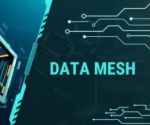 “Data Mesh is a strategic approach to modern data management and a way to strengthen an organization’s digital transformation journey,… Read more: Data Mesh And It’s Principles
“Data Mesh is a strategic approach to modern data management and a way to strengthen an organization’s digital transformation journey,… Read more: Data Mesh And It’s Principles - Hard Tech To Disrupt The Future
 “Affordable robotics, AI-driven sensor fusion, uninterrupted connectivity and supermaterials are merging into the technology stack to unlock massive new tranches… Read more: Hard Tech To Disrupt The Future
“Affordable robotics, AI-driven sensor fusion, uninterrupted connectivity and supermaterials are merging into the technology stack to unlock massive new tranches… Read more: Hard Tech To Disrupt The Future - Top 5 Cloud Computing Vulnerabilities
 “Protecting your organization requires accepting the fact that your systems will be breached at some point; therefore, your strategy should… Read more: Top 5 Cloud Computing Vulnerabilities
“Protecting your organization requires accepting the fact that your systems will be breached at some point; therefore, your strategy should… Read more: Top 5 Cloud Computing Vulnerabilities - What’s Next After Cloud Computing – Edge?
 “Now, some companies are looking to replace Cloud Computing with something called Sky, Edge, or Hybrid Computing.” In the past few… Read more: What’s Next After Cloud Computing – Edge?
“Now, some companies are looking to replace Cloud Computing with something called Sky, Edge, or Hybrid Computing.” In the past few… Read more: What’s Next After Cloud Computing – Edge? - Chip To Cloud IoT
 “Chip-to-Cloud IoT looks like a promising way to .build a more secure, useful and decentralized technology for all.” Shannon Flynn… Read more: Chip To Cloud IoT
“Chip-to-Cloud IoT looks like a promising way to .build a more secure, useful and decentralized technology for all.” Shannon Flynn… Read more: Chip To Cloud IoT - How To Secure The Cloud
 “Encryption, Configuration are one of the best ways to secure your Cloud Computing systems.’ Fortunately, there is a lot that you… Read more: How To Secure The Cloud
“Encryption, Configuration are one of the best ways to secure your Cloud Computing systems.’ Fortunately, there is a lot that you… Read more: How To Secure The Cloud - Top 7 Advanced Cloud Security Challenges
 “Before jumping feet-first into the Cloud, understand the new and continuing top Cloud Security challenges your organization is likely to… Read more: Top 7 Advanced Cloud Security Challenges
“Before jumping feet-first into the Cloud, understand the new and continuing top Cloud Security challenges your organization is likely to… Read more: Top 7 Advanced Cloud Security Challenges - Why Cloud Security Is Important
 “Cloud Security is the whole bundle of technology, protocols, and best practices that protect Cloud Computing environments, applications running in… Read more: Why Cloud Security Is Important
“Cloud Security is the whole bundle of technology, protocols, and best practices that protect Cloud Computing environments, applications running in… Read more: Why Cloud Security Is Important - Why Implement Zero Trust Security Model?
 “Zero Trust extends the principle of ‘least privilege’ to its ultimate conclusion: Trust no one and grant the least privilege,… Read more: Why Implement Zero Trust Security Model?
“Zero Trust extends the principle of ‘least privilege’ to its ultimate conclusion: Trust no one and grant the least privilege,… Read more: Why Implement Zero Trust Security Model? - Advantages And Disadvantages Of Cloud Computing
 “When weighing the Cloud Computing advantages and disadvantages, it’s important to keep the sources of those pros and cons in… Read more: Advantages And Disadvantages Of Cloud Computing
“When weighing the Cloud Computing advantages and disadvantages, it’s important to keep the sources of those pros and cons in… Read more: Advantages And Disadvantages Of Cloud Computing - Benefits Of Cloud Computing
 “Cloud Computing benefits organizations in many ways. In fact, the benefits are so numerous that it makes it almost impossible not… Read more: Benefits Of Cloud Computing
“Cloud Computing benefits organizations in many ways. In fact, the benefits are so numerous that it makes it almost impossible not… Read more: Benefits Of Cloud Computing - Why WebAssembly Is The Future Of Computing?
 “WebAssembly is a binary instruction format and virtual machine that brings near-native performance to web browser applications, and allows developers… Read more: Why WebAssembly Is The Future Of Computing?
“WebAssembly is a binary instruction format and virtual machine that brings near-native performance to web browser applications, and allows developers… Read more: Why WebAssembly Is The Future Of Computing? - Virtualization In Cloud Computing
 “Virtualization and Cloud Computing are often discussed interchangeably, but while they’re closely associated, these tech terms have crucial differences.” Virtualization… Read more: Virtualization In Cloud Computing
“Virtualization and Cloud Computing are often discussed interchangeably, but while they’re closely associated, these tech terms have crucial differences.” Virtualization… Read more: Virtualization In Cloud Computing - Cloud Service And Deployment Models
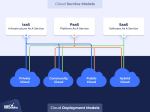 “I don’t need a hard disk in my computer if I can get to the server faster… carrying around these… Read more: Cloud Service And Deployment Models
“I don’t need a hard disk in my computer if I can get to the server faster… carrying around these… Read more: Cloud Service And Deployment Models - Why Use Serverless Computing
 “Serverless Computing is a Cloud computing execution model that lets software developers build and run applications and servers without having… Read more: Why Use Serverless Computing
“Serverless Computing is a Cloud computing execution model that lets software developers build and run applications and servers without having… Read more: Why Use Serverless Computing - Spatial Computing Revolutionizing Our World
 “Today, new technologies are advancing at dizzying speeds –impacting all areas of our lives, including how we shop and pay… Read more: Spatial Computing Revolutionizing Our World
“Today, new technologies are advancing at dizzying speeds –impacting all areas of our lives, including how we shop and pay… Read more: Spatial Computing Revolutionizing Our World - Trending Fullstack Frameworks
 “Writing the first 90 percent of a computer program takes 90 percent of the time. The remaining ten percent also… Read more: Trending Fullstack Frameworks
“Writing the first 90 percent of a computer program takes 90 percent of the time. The remaining ten percent also… Read more: Trending Fullstack Frameworks - Threat Intelligence Explained
 “Threat intelligence is evidence-based knowledge about an existing or emerging menace or hazard to assets that can be used to… Read more: Threat Intelligence Explained
“Threat intelligence is evidence-based knowledge about an existing or emerging menace or hazard to assets that can be used to… Read more: Threat Intelligence Explained - Docker’s Role In Microservices
 “Docker is an open platform for developing, shipping, and running applications. Docker enables you to separate your applications from your… Read more: Docker’s Role In Microservices
“Docker is an open platform for developing, shipping, and running applications. Docker enables you to separate your applications from your… Read more: Docker’s Role In Microservices - Why Is Kafka The First Choice For Microservices?
 “Kafka is an event streaming platform used for reading and writing data that makes it easy to connect Microservices.’ When… Read more: Why Is Kafka The First Choice For Microservices?
“Kafka is an event streaming platform used for reading and writing data that makes it easy to connect Microservices.’ When… Read more: Why Is Kafka The First Choice For Microservices? - Pros And Cons Of Microservices Architecture
 “Microservices Architecture has become increasingly popular in recent years. It offers a number of advantages over traditional monolithic architectures, but… Read more: Pros And Cons Of Microservices Architecture
“Microservices Architecture has become increasingly popular in recent years. It offers a number of advantages over traditional monolithic architectures, but… Read more: Pros And Cons Of Microservices Architecture


[…] of the advanced cloud-native security challenges and the multiple layers of risk faced by today’s cloud-oriented organizations […]
LikeLike